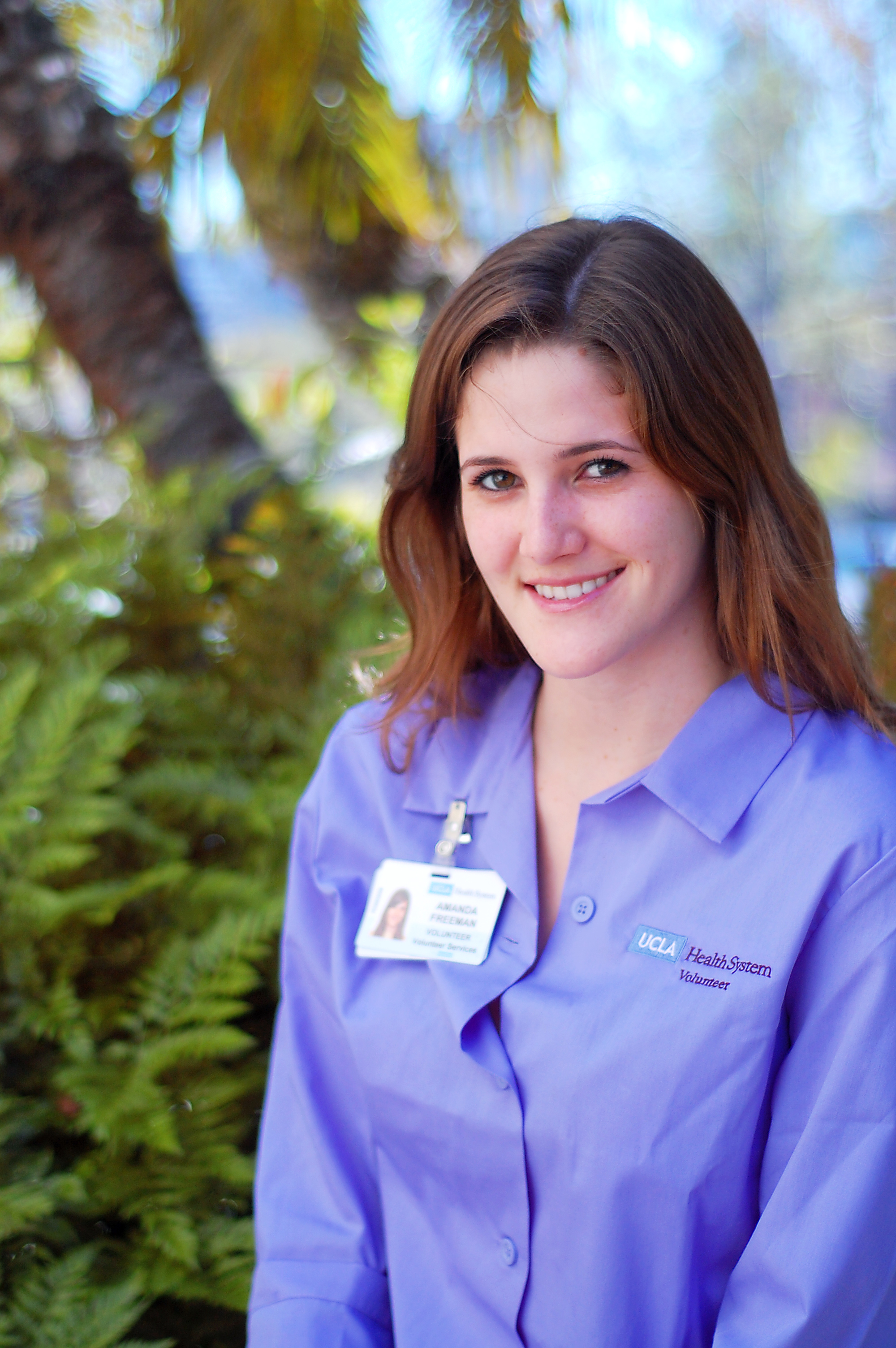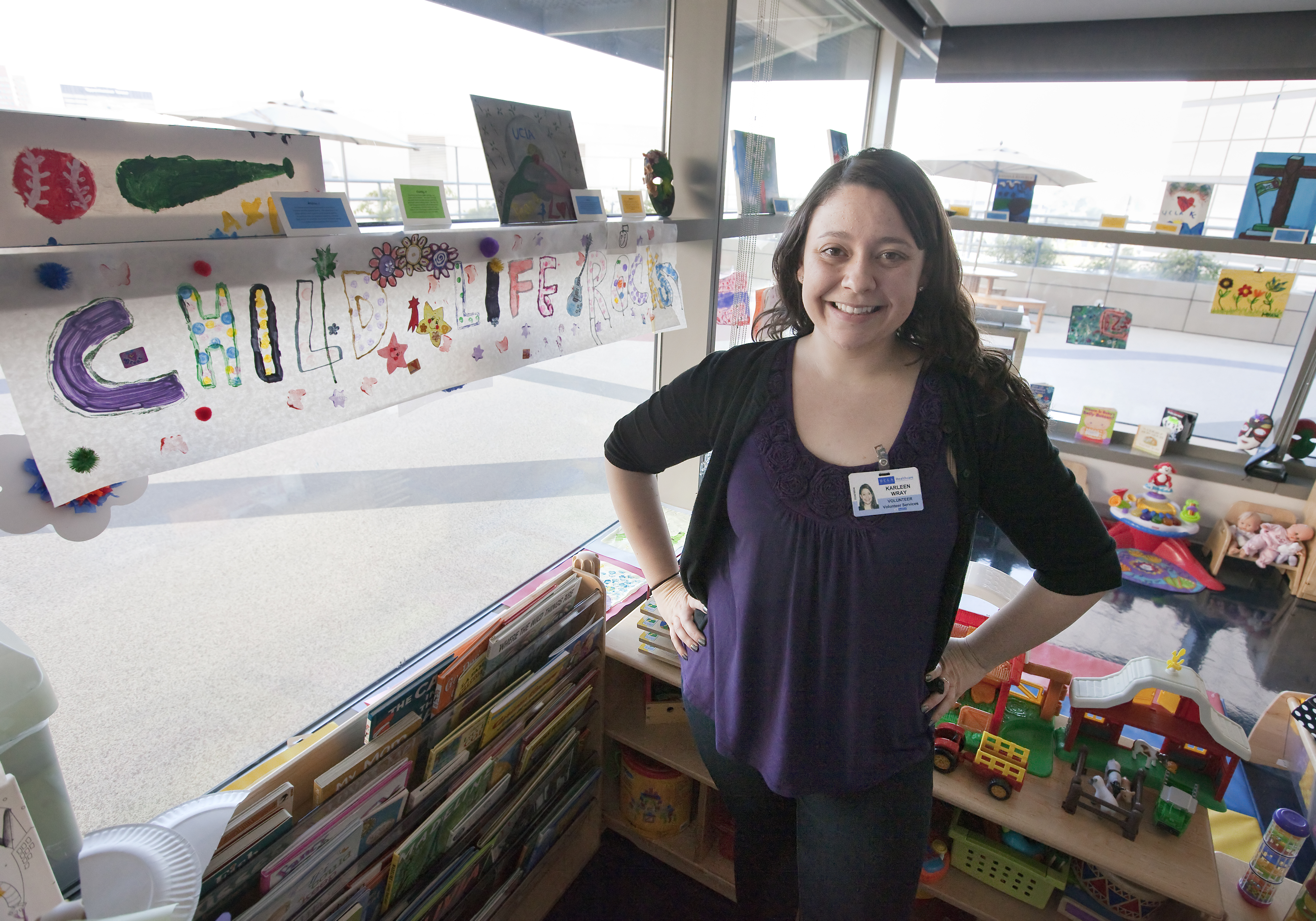
Third-year psychology student Amanda Freeman is a volunteer with the Child Life program at the Ronald Reagan UCLA Medical Center.
Karleen Wray spent a recent shift at the Mattel Children’s Hospital UCLA playing Rock Band with a group of kids.
Other days, she plays board games or supervises as the younger patients paint and play with toys in a room that resembles a preschool.
“It’s a safe place ”“ there are no medical procedures in play rooms,” Wray said. “(Patients) know when they go there that this is a place to have fun, be themselves.”
If a patient is unable to leave the hospital room, Wray can have a private play session with him or her.
Her job as a volunteer for the Child Life Program is to give patients a way to escape the hospital environment they are used to. Wray has been volunteering for the program for more than a year. She graduated from UCLA in March with a degree in psychology, but she kept volunteering for Child Life.
The program’s playrooms, teen lounges and family rooms are available for patients, and 250 volunteers provide companionship for the kids, said Child Life director Amy Bullock.
“(The volunteers) help the kids feel a little bit more normal in an abnormal experience,” Bullock said. “They engage in activities and feel like a kid again.”
Third-year psychology student Amanda Freeman spent her first day as a volunteer playing Operation and Candy Land for three hours.
Freeman and the 8-year-old patient talked about animals, her dog at home, and how much she wanted to leave the hospital.
Freeman decided to volunteer for Child Life in January because she wants to work in marriage and family counseling. This gives her a look into families whose children go through a lot of struggles.
The Child Life program also recognizes the challenges that parents go through and provides support for families in addition to the patients, Bullock said.
The program recently received a $2.125 million donation from the Chase Foundation, part of which will provide partial support for a family resource room coordinator, she said.
This room gives parents the mature equivalent of what their children receive, she said. Another $50,000 will go toward a healing garden for patients and their families.
Pediatric patients are not all young children ““ they range in age from infants to 21-year-olds.
Wray recalled one patient in his late teens who has been in and out of the hospital frequently for the last five or six months.
“He could be a college student just like me,” Wray said. “When he’s in the hospital he can feel like he’s with his friends from home.”
When she spends time with the patient, Wray doesn’t feel like a volunteer. They talk, they play Pictionary; they do what friends do.
